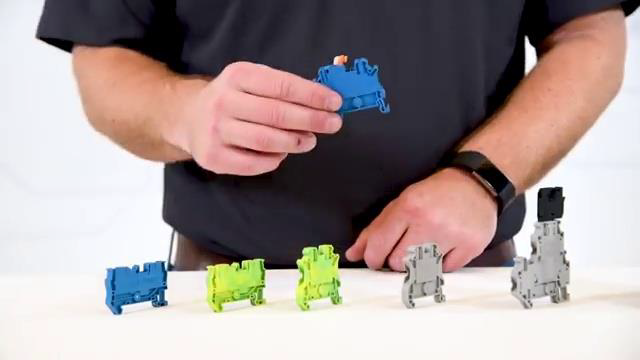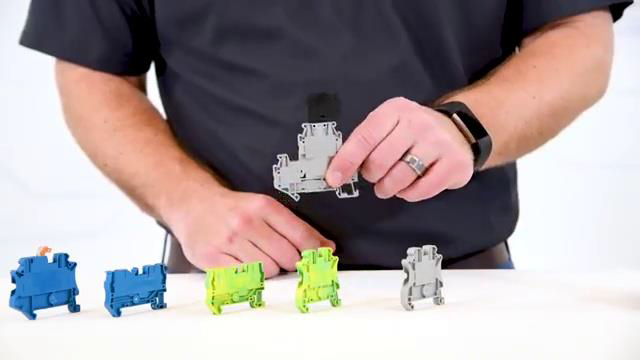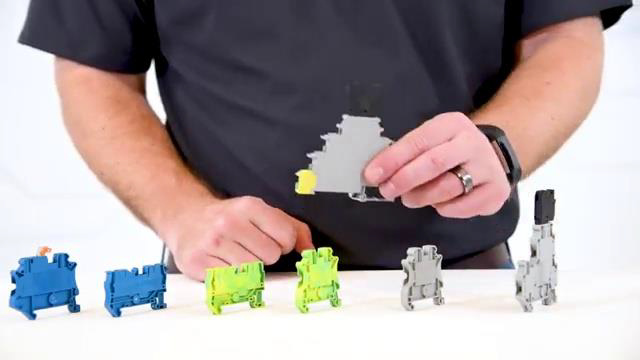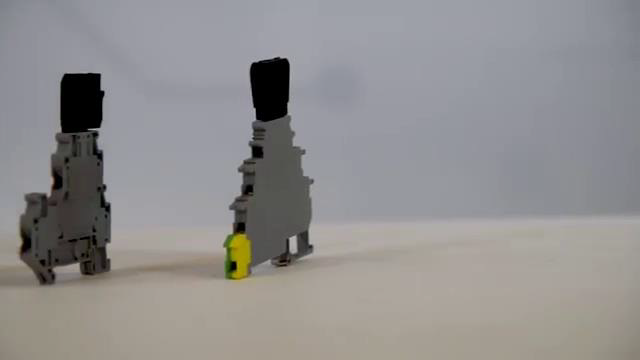Terminal_Blocks_Top_5_Things_You_Must_Know.pdf
- MAKE A PLAN & SELECT THE RIGHT TERMINAL BLOCKS
Don't use the wrong kind of terminal blocks for your specific application! - KNOW IF AND WHEN YOU NEED A DISCONNECT
The most basic types of terminal blocks, simply act as a junction point. This will allow current to pass through with nothing to stop, but if you need to stop the current from flowing, you will need some kind of disconnect. - DO YOU NEED FUSE PROTECTION?
How do the terminal blocks integrate with the circuits you are wiring? Do you need to protect the devices that are connected to your terminal blocks? You can use terminal blocks that have a place for a fuse to be connected. - MULTI LEVEL TERMINAL BLOCKS
Use when you are tight on space. - GROUNDING BLOCKS
Essential when doing any kind of electrical wiring
Transcript:
[0m:4s] Hi I'm Josh Bloom, welcome to another video in the RSP Supply education series. If you find these videos helpful, it certainly helps us if you could give us a thumbs up and subscribe to our channel.
[0m:14s] In today's, video we're going to talk a little bit more about terminal blocks. For more information about terminal blocks and how they work, please reference our other videos where we discuss this in great detail. Today, however, we want to tell you the top five things you must know when using terminal blocks. So, let's get started. Number one, planning goes a long way.
[0m:38s] With such a wide variety of terminal blocks that can be used, it is essential to make sure that you have a proper plan in place for your specific application.
[0m:47s] It is important to use the correct types of terminal blocks in the various circuits you intend to wire. If the wrong types of terminal blocks are used, it can cause many issues, not to mention it can be very dangerous. So, take some time before you get started and plan out what is actually needed.
[1m:5s] Number two, do you need a disconnect? When using terminal blocks, you need to consider what you want it to do. The most basic types of terminal blocks simply act as a junction point. This will allow current to pass through with nothing to stop it. But, if you need to stop the current from flowing, you will need some kind of disconnect.
[1m:25s] There are a variety of different types of terminal blocks that have manual disconnects that can be used for this very purpose. So, select the one that will best fit your needs.

[1m:35s] Number three, what about protection? Think about the circuits that you are wiring and how terminal blocks integrate with those circuits. In many cases, you will need to protect the devices connected to these terminal blocks. In this case, you can use terminal blocks that have a place for a fuse to be connected. With the ability to add fuses wherever you need them, it can offer great flexibility when designing your electrical circuits and can add extra levels of safety whenever you feel, it is actually needed.

[2m:6s] Number four, if you're tight on space, multilevel terminal blocks, may be the answer. When dealing with situations where there's very little room to accommodate the amount of IO that is needed for your specific scenario, multilevel terminal blocks can allow you to wire multiple points or circuits in much less space than if you are using single level terminal blocks. These types of terminal blocks are very commonly used when wiring instruments and sensors because of the amount of wires that can potentially come from one device. Multilevel terminal blocks can save a ton of space and provide great flexibility in many different applications.

[2m:43s] And lastly, number five, ensure that grounding blocks are used when necessary. When doing any kind of electrical wiring proper grounding is essential to make sure all components in that circuit function properly. There are several different styles of grounding terminal blocks to meet various different scenarios that you may encounter.

[3m:4s] Whatever the scenario may be, make sure to ground your circuits when necessary and make sure to use the right grounding terminal block. So, let's quickly recap. Number one, make a plan and select the right terminal blocks. Number two, know if and when you need a disconnect. Number three, do you need fused protection? Where and when? Number four, tight on space? Use multi level terminal blocks. And, lastly, number five, always ground when necessary and use the proper grounding terminal blocks.

[3m:35s] For a full line of terminal blocks and thousands of other products, please go to our website. For more information or other educational videos, go to RSPSupply.com, the Internet's top source for industrial hardware. Also, don't forget: like and subscribe.




